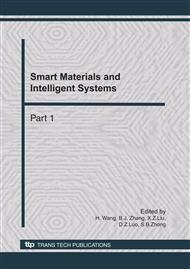p.846
p.851
p.857
p.863
p.868
p.873
p.879
p.884
p.888
Simulation Study on Laser Welding of High Strength Steel to Vehicle
Abstract:
Based on quasi-stable state heat-transfer control mode, finite difference equation of thermal conductivity in laser welding is deduced. Physical parameter (specific heat) substitutes for phase-changing latent heat, then critical temperature of thermal conductivity welding is determined, so finite difference equation can be solved by MATLAB software. Temperature field distribution is simulated to weldment.Influence of technological parameters such as laser power and welding speed on temperature field are investigated systematically by numerical simulation, these can establish theoretical basis for optimization of technological parameters in laser welding.
Info:
Periodical:
Pages:
868-872
Citation:
Online since:
October 2010
Authors:
Keywords:
Price:
Сopyright:
© 2011 Trans Tech Publications Ltd. All Rights Reserved
Share:
Citation:


